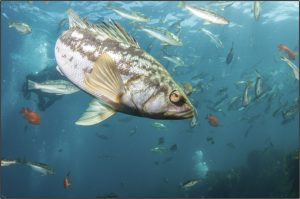Consensus reached on priority recommendations for supporting development of national eDNA

A federal task force that includes SCCWRP has reached agreement on the technical and management actions that will need to be taken to support development of a coordinated national strategy for incorporating environmental DNA (eDNA) methods into aquatic monitoring programs nationwide.
The task force’s consensus recommendations, described in a manuscript published in May by the journal Environmental DNA, outlines priority steps that scientists and managers should take to coordinate and harmonize eDNA policies across agencies, build monitoring capacity, and fill knowledge gaps. The eDNA task force was convened by the White House Office of Science and Technology Policy.
eDNA-based monitoring has the potential to serve as a cost-effective complement and/or alternative to traditional morphology-based monitoring methods. eDNA monitoring uses the DNA that organisms shed into their environment to monitor a broad range of organisms – often with greater speed, accuracy and precision than traditional monitoring methods.
A draft of the national eDNA strategy is expected to be available this winter.
More news related to: Bioassessment, DNA Barcoding